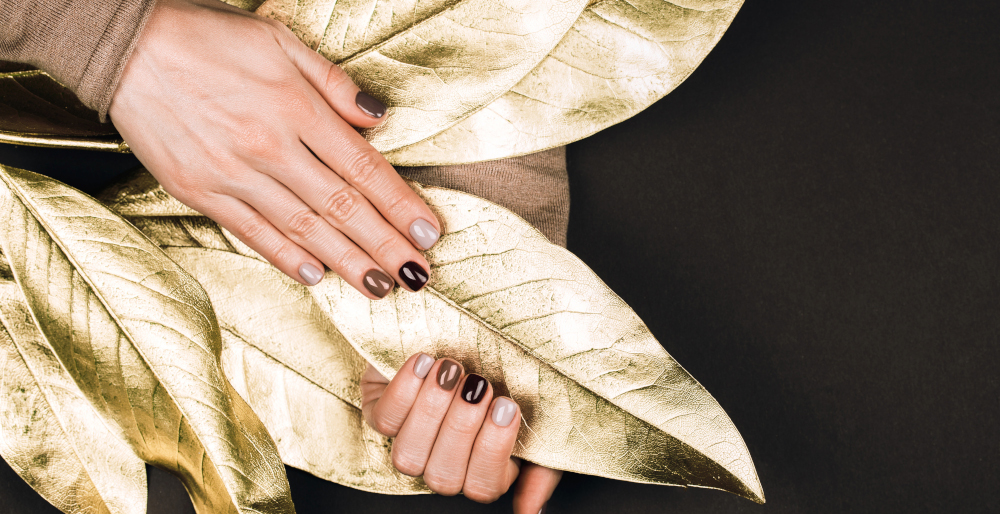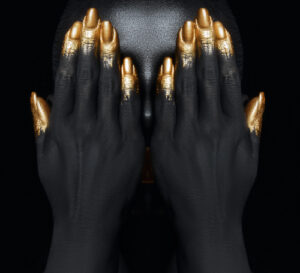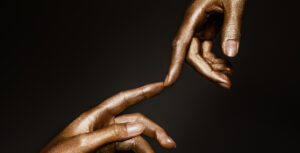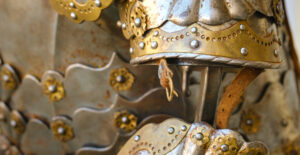
It starts with a file and a flick. A gentle scrape of old polish, a reshaping of what’s already there. Then comes the base, the builder, the colour, the shine. And somewhere between the first coat and the final design, a transformation begins, not just of the hand, but of the person behind it. In South Africa’s townships, where style is currency and identity is often stitched from the scraps of resilience, nail salons have become more than beauty spots. They are stages. Confession booths. Therapy chairs. Arenas where stories are told, class is performed, and gold, literal and metaphorical, is shaped beneath the nails.
You hear it before you see it. The whir of a nail drill, the clink of bangles against acrylics, the low chatter of women deciding between “Coffin” and “Almond” shapes. The air smells faintly of acetone and ambition. These are not just nails. They’re declarations. They say, I might not have a car, but I have a chrome French tip that could stop traffic. I might be in my cousin’s backroom flat, but my glitter ombré is fit for the Met Gala. And the woman doing the nails? She’s part artist, part hustler, part healer. She knows things. Knows whose man is acting strange. Knows who’s got a job interview. Knows who cried last night but showed up this morning anyway because your hands, at least, should look like you’ve got it together.
In many homes, getting your nails done is the closest thing to luxury that doesn’t require a credit check. It’s affordable indulgence, small-scale defiance against a system that says you can’t have nice things unless you’ve earned them by some sanctioned, respectable route. But the women in these salons aren’t waiting for permission. They’re building glam on grit. One hand at a time. They don’t just wear gold, they layer it, sculpt it, encapsulate it inside transparent resin, sometimes with flakes, sometimes with foil, sometimes with 3D roses blooming out of the pinky finger like they grew there by magic.
Gold on the nail is never just aesthetic. It’s power. It’s proof that you still know how to dazzle, even when the lights are off. In townships where street corners double as job markets and queues at Home Affairs stretch longer than dreams, a gold-tipped hand held confidently in the air is more than style, it’s protest. It says, I see myself. I rate myself. I refuse to shrink.
The young artists doing the work, some trained, most self-taught, are part of a silent creative economy that’s often ignored by headlines but always in demand. They work from small containers, converted bedrooms, and pop-up stations under umbrellas. Their toolkits aren’t just brushes and files. They include patience, hustle, and Instagram. Because reputation spreads in photos and in whispers. You don’t just get a good manicure. You get to say who did it. And if your “tech” is the one making waves, then a little of that shine touches you too.
 And there’s a rhythm to it all. Payday weekends are booked out. December is chaos. January is quiet, but even then, someone always finds a way to make it work. Sometimes a girl will come in with only R80 and ask what she can get. The nail tech won’t judge. She’ll find a way. She’ll improvise. Because she remembers when she had R40 and no lamp, just sunlight and hope. These are not just transactions, they’re exchanges of grace.
And there’s a rhythm to it all. Payday weekends are booked out. December is chaos. January is quiet, but even then, someone always finds a way to make it work. Sometimes a girl will come in with only R80 and ask what she can get. The nail tech won’t judge. She’ll find a way. She’ll improvise. Because she remembers when she had R40 and no lamp, just sunlight and hope. These are not just transactions, they’re exchanges of grace.
Of course, not everyone understands it. There will always be those who scoff, who say, “She doesn’t even have a job, but her nails are done.” As if dignity should be rationed. As if beauty needs a payslip. As if you can’t want to look good while figuring the rest out. That criticism often comes from those who’ve never had to stand in a long line feeling invisible. Who’ve never known what it means to leave the house with one thing you can control, your hands, your nails, your sparkle. In a world where the odds are stacked, sometimes the gold on your fingertip is the only armour you’ve got.
There’s also the unspoken code. The length and shape say different things. Square is classic. Coffin is bold. Stiletto is trouble. And the colours? They speak. Nude says “I’m working today.” Red says “Try me.” Gold says “I’m not just here, I’ve arrived.” These choices are rarely random. They’re curated like outfits, like moods, like messages to the world. And the woman shaping them is fluent in this language. She translates your silence into shine.
Nail culture in the townships is not about copying global trends, it’s about remixing them. Adding beads, charms, decals, initials. Sometimes even mini portraits, whole scenes. It’s Johannesburg meets Tokyo, Soweto meets LA, all filtered through lived experience. And when the final top coat cures under the UV lamp and you see your reflection in that tiny strip of perfection? That’s more than vanity. That’s victory.
For a country still healing, still unequal, still trying to balance the weight of history with the flash of possibility, manicure culture in the township is its own quiet revolution. It’s where style meets survival. Where gold is not hoarded in vaults but flaunted on fingertips. Where the economy of glam says, I might not have everything, but I have this. And for now, this is enough.
So the next time you see a hand with ten tiny masterpieces walking confidently through the taxi rank or tapping gently on a till or raising a glass at a family braai, don’t reduce it to decoration. That’s labour. That’s a love letter to self. That’s gold beneath the nails. And it doesn’t just shimmer. It speaks.



